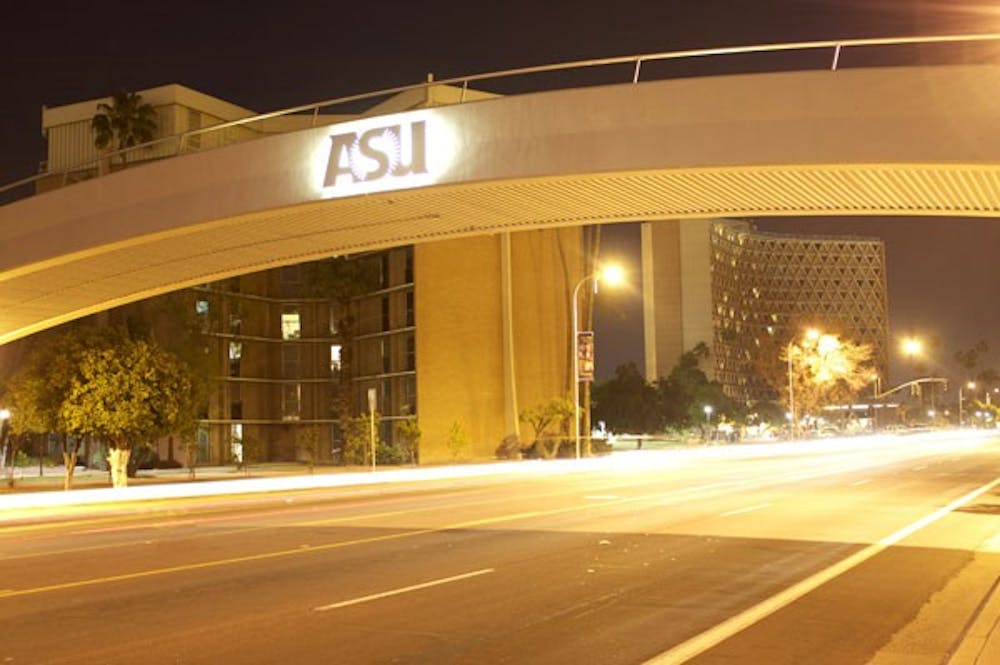Tempe Police are increasing traffic enforcement throughout the city this week, with special emphasis on the city’s most dangerous intersections, officials said Monday.
The campaign, which began April 12 and will continue through Sunday, is aimed at slowing drivers down and reducing the number of crashes at high-risk intersections, Tempe Police Sgt. Steve Carbajal said.
The intersection with the most crashes in Tempe in 2009 was University Drive and Rural Road, with 69 collisions occurring near the northeast corner of ASU’s Tempe campus.
The intersections of Broadway Road and McClintock Drive, with 64 collisions, and Rural Road and Southern Avenue, with 62 collisions, are also among the most dangerous Tempe intersections.
“We’re focusing on these problem areas to lower the number of collisions,” Carbajal said. “There’s things that lead up to collisions, and that’s what we’re trying to combat. It’s not a coincidence that there’s a speed camera just north of [University and Rural.] If we can get people to slow down … we’re hoping that will have an impact on the number of collisions.”
The program, which was coordinated in conjunction with the Governor’s Office of Highway Safety, will increase the number of officers patrolling dangerous areas.
The Tempe Traffic Bureau, which is comprised primarily of motorcycle units focused on traffic enforcement, will be bolstered with additional officers and patrol cars for the duration of the two-week campaign.
Carbajal said the intersections have seen many accidents because of their proximity to the high level of traffic moving through downtown.
“You have to understand geographically where Tempe is,” he said. “If people are commuting to work in Phoenix, they’re going to drive through Tempe. We have that commuter traffic Chandler, Mesa and Gilbert don’t have. Then you add ASU’s 60,000-plus students — well I’m not surprised these intersections are all near campus.”
Director of the Governor’s Office of Highway Safety Alberto Gutier said extra enforcement near ASU will also help protect the numerous students walking and biking to campus.
“This sends a message to students and people visiting from different parts of Tempe that we have pedestrians and bikers and others that cross the streets that need to be protected,” he said. “People that are not respecting crosswalks, yellow lights and speed restrictions need to be made aware.”
Psychology and family and human development freshman Abby Henderson, who recently got in an accident near campus, agreed that students’ driving habits might also contribute to the frequent crashes.
“I don’t think my accident was speed-related, but I think in general, it’s a factor,” Henderson said. “Near campus, the speed limit is technically 35 (mph) but students typically go 45 (mph) or more, so I definitely think [slowing down] would help.”
Gutier said the increased enforcement will have a positive effect beyond ASU and Tempe.
“Any time you show enforcement with officers looking at intersections, there’s a halo effect, so that enforcement not only applies to that area,” he said. “If you see an officer at an intersection, as you approach the next one you will say ‘Gee, I wonder if the next intersection has one too,’ so you slow down. I’m glad they are doing extra enforcement.”
Reach the reporter at keshoult@asu.edu





